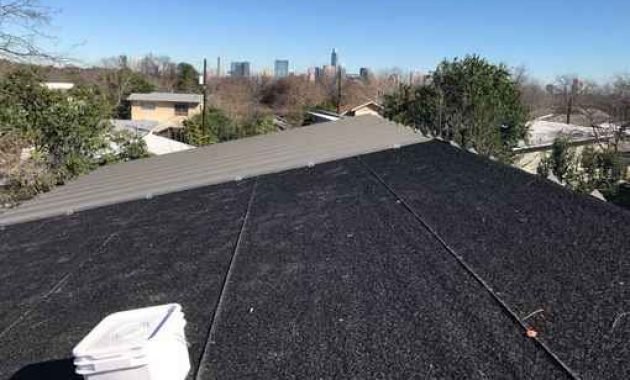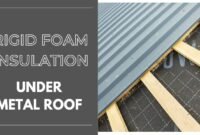The application of metal roof underlayment is demanded more nowadays for some benefits it gives. A metal roof is indeed more durable as well as stronger. It is resistant enough even in the worst situations. Interestingly, the price itself is quite affordable.

However, this type of roof also has some lacks in the perspective of some users. The metal roof is indeed not really attractive compared to the other types. Meanwhile, the metal itself is basically a good heat conductor so that the home’s interior tends to feel more thermal.
Sure, there are some matters to solve the problems. To make the roof look more beautiful, you can paint it. Besides, there are also many ways to avoid the home being too hot. If you are interested in this roof type and want to learn more about it, you can read some explanations below.
Benefits of Metal Roof Underlayment over Shingles
The underlayment of metal roof over shingles is one of the solutions for some problems that have been mentioned before. Installing the metal roof right on your roof structure is indeed more economical.
However, it gives you thermal conduction. It is better to give another layer below the metal roof. In fact, the metal roof and shingles are protected and complete to each other.
With the application of shingles, the home feels cooler and more comfortable. But since shingles are thinner, weaker, and fragile, you need another material to be put above them. Well, the metal roof is the right answer. You can get more strength and durability from the metal roof.
The double-layer roof idea also protects your home well, in general. There is no more worry about leakage or something. During the cold seasons like winter or rainy, the interior tends to be warmer also.
The roof area looks neater. If you are good at decorating them well, this idea makes the interior more beautiful also. It is definitely multiple benefits to one idea.
How to Avoid Condensation under Metal Roofing
The main problem that commonly occurred when applying the metal roof is condensation. Condensation here refers to the transformation of the roof due to some external factors. This is the nature of metal, actually. Sometimes, it is just swollen and shrunk when the weather is hotter and cooler, respectively.
In a small amount, it is not a big deal at all. But when the weather change is extreme, it causes some damage.

Since the beginning, it is suggested for you to do some anticipation. Therefore, no matter how bad the weather outside, you are still protected well inside. One of the tips is by using an anti-condensation material under the metal roof.
The product is commonly in the form of a plate, and it is widely available out there. Since you will need to use it for a long time, make sure the condensation material applied is really durable and strong.
Second, you can apply certain ventilation in some spots of the metal roof construction. It helps the air to circulate well, and the condensation can be avoided or at least diminished. You may wonder where to apply the ventilation. Well, it actually depends on your house conditions. You must make sure to consult this matter with the expert first before installing the roof.
Metal Roofing Underlayment Requirements
Basically, all buildings and houses can apply metal roofing. But of course, there are indeed some certain conditions in which it is better to apply other roof types. Talking about the requirements, make sure that the metal roof used is categorized as the light metal roof.
Your house must be able to hold the roof well anyway. Sure, it means that the roof should not be too heavy.
The product used must also be labeled as a national standard. This way, the metal roof product is guaranteed to be safe for the customers. The right measurement must be applied so that the roof is installed well and able to make the exterior look more aesthetic.
It is also better to apply an inner layer under the metal roof. Shingles are one of them to avoid the house becoming too thermal during the summer. So, are you interested in the metal roof underlayment?


